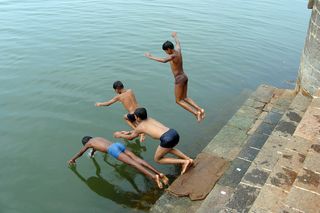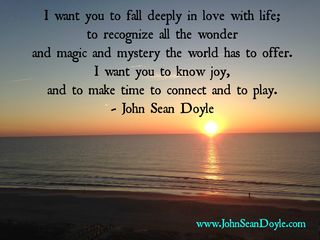This year, I set out to do at least one “microadventure” each month. Something to break up the usual routine. Something that introduces a level of discomfort or risk and helps me see the world differently. It does not have to be big or grand, dangerous or far from home. But every now and then we should go out and interrupt the normalcy.
Alastair Humphreys, the 2012 National Geographic Adventurer of the Year, describes microadventures as any sort of adventure that is “short, simple, local, cheap – yet still fun, exciting, challenging, refreshing and rewarding.” He offers examples. Follow a river to its source. Take a train or a bus to a new town, spend the day there and cycle back. After work, go wild camping and stargazing and then in the morning, watch the sunrise before heading back to the office. Doing so will offer new perspectives to a familiar place.
When we seek the strange or exotic that is just outside our door, we disrupt our expectations. We put ourselves off balance and regain our equilibrium. By deliberately inserting ourselves into places where the rules are not clear, or were we lack what we thought we needed, we can rediscover who we really are and begin to live our lives more passionately.

It is about learning to play again. In the pantheon of human virtues, “zest”, that wholeheartedness of living, has a robust connection to a deep satisfaction in life. Yet while our children exhibit it naturally and beautifully, somewhere along the line most of us lose this flower-laden path to happiness and fulfillment. We were just so busy growing up and struggling to establish who we are.
To throw ourselves into the world, into the surprising and uncomfortable, is an invitation to laugh at our own presumptions. When we discover for the first time what was right before our eyes, it opens us to the wonder of living. And because we are always growing, always changing and adapting, we should release ourselves into the unfamiliar and new again and again and again.
The opportunities for play and for awe are all around us. We need only look to the edges of our everyday lives, to our horizons – be they visual, auditory, taste, touch, smell, cultural, linguistic – and then press to see what runs beyond the limits of our gaze.
Maybe it is climbing the nearest mountain to a place where we can suddenly see the invisible landscapes we’ve walked upon all along. Or maybe we are called to bear witness to an ocean sunrise, to seagulls screaming like they did at the creation, as the sandpipers desperately search for something.
We can poke in antique shops and imagine what secrets the artifacts keep. They are not just the fossils of an earlier time. Every one of them belonged to someone once, and meant something. Their stories would be personal and intimate and would remind us that our lives are limited and enduring too.
You can go the mall or town square or bus depot and hug 40 strangers. Or 100. Or 300. And while you are in the station, buy a ticket to some unknown place and ride all night listening to what they say about their lives. Our worlds can be so very different from one another. And yet so much is the same.
And if you meditate in a snowy park at dawn, I promise, the birds will greet you with song.
There are so many other ways to press against our limits. There is no need to travel halfway around the globe. There are wondrous adventures halfway around the block. Our lives are not measured by the number of frequent flyer miles, stamps in our passports or world wonders seen. But the richness of our lives, its quality and its depth, is enhanced by the number and reach of our disrupted assumptions.
And as you do go about reintroducing yourself to the world, if you can, do it with a friend. Something special happens when we involve people, meet them where they live and touch those things most precious, personal and essential to their lives.
Joseph Campbell said that people don’t want a meaning in life, they want a feeling of being alive. This, by itself, seems incomplete. But it does touch other truths that are also incomplete. We all want meaning and joy. Each of us longs for our lives to be significant in some way. And as we go about seeking independence and connection, we want to be loved; loved for who we are in our own unique and messy lives.

Sometimes what speaks to us the most directly and intimately is something that makes us feel awake and alive. If your life is already howling and wonderful, filled with decency and meaning, it is still easy to get lulled to sleep by our everyday, normal routine. Or if your life is as hard and sad as a life can be, there is still a need, and the space, for essential joy. Microadventures allow us to re-tilt the earth so we remain fresh in our lives. They are an opportunity to respond to the question, “how do we want to live in the world?”.
I want you to fall deeply in love with life; to recognize all the wonder and magic and mystery the world has to offer. I want you to know joy, and to make time to connect and to play.
©2017 John A. Doyle, Jr, All Rights Reserved.
References
This article was first published on Psychology Today, here.
Park, N., & Peterson, C. (2006). Moral competence and character strengths among adolescents: The development and validation of the Values in Action Inventory of Strengths for Youth. Journal of Adolescence, 29, 891-905. – When compared with U.S. adults, youth from the U.S. are higher on the character strengths of hope, teamwork, and zest and adults are higher on appreciation of beauty & excellence, honesty, leadership, open-mindedness.
Park, N., Peterson, C., & Seligman, M. E. P. (2004). Strengths of character and well-being. Journal of Social & Clinical Psychology, 23, 603–619. – The character strengths most highly related to life satisfaction are hope, zest, gratitude, curiosity, and love. These strengths consistently and repeatedly show a robust, consistent relationship with life satisfaction.
More on pushing past our horizons, can be found here.
More on Alastair Humphreys and microadventures here.






Pingback: Seeking to Make Things Difficult – Sean Doyle
Pingback: MicroAdventures – on the Radio – Sean Doyle